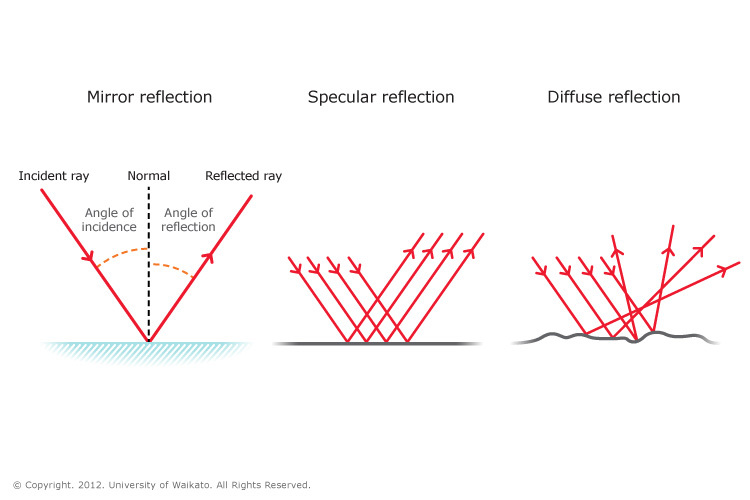There's always a photon striking back to the source
Note: This is only a speculation. I don't claim that any of the following is scientifically proven. It's entirely based on my perception. Hence, I am open to any sort of suggestions, opinions and discussions.
Introduction to Photons
We all have heard about long years of debates over light being a wave, a particle or both and what events led to the discovery of photons.
Put simply, photons are the fundamental particles of light, which has particle nature and uniquely, wave nature as well. Such unique properties of light allows light to undergo phenomena like reflection, refraction,diffraction and diffusion. Great scientists spent years of research over these particles into contributing towards quantum physics (further: quantum particles).
Photons are mostly of the visible portion of the electromagnetic spectrum. The deep and continuous study and research about these particles led to the creation of a whole new topic called quantum particles.
We know that the angle of incidence and angle of reflection are equal to each other when light strikes off a surface. But it is important to note that this holds true for most of light striking only when the surface is ideally smooth.

Different Phenomena of Light
Below are brief descriptions of the phenomena required to support my theory.
Reflection
This is the phenomenon where light (specifically photons) is bounced off a surface. How well the light bounces off a surface depends on the nature of the surface. The smoother the surface, more are the laws of reflection valid.We know that the angle of incidence and angle of reflection are equal to each other when light strikes off a surface. But it is important to note that this holds true for most of light striking only when the surface is ideally smooth.

Diffusion
Reflection is clearly an ideal phenomenon. Diffusion is the bouncing of light in many directions due to the irregularities in the surface. So, in the real world, nothing is perfectly smooth and hence diffusion is very common. Even the "smoothest" surface will have a lot of irregularities that are micro-level and this is a lot for tiny particles like photons, although in the macro-level it may be hard to notice any difference.

In the above picture the small irregularities can cause a lot of photons to deflect not according to the first law of reflection. In short, reflection can be understood as a special form of diffusion.
Refraction
Refraction is the change in direction of light caused by change in speed when travelling from one medium to another. Of course, when light strikes a surface, depending on the angle of incidence and the opacity of the medium, the percentages of light refracting and reflecting change. Theoretically, in the most ideal cases, at the critical angle of the medium, light reflects "completely". But, in real cases, there will be partial refraction and absorption too.
Basically, reflection, refraction and absorption coexist. This is important to support my theory.
This reflection, more specifically diffusion, causes photons to deflect in all directions. This gives room for at least one photon to retrace its path, thereby hitting back at the source.
 |
| The black lines are the incident rays and red lines are reflected rays |
One of the light rays in the above picture shows the retracing of its path. Such a situation can happen more often in real-world cases when there is a great amount of irregularities in the surface. Even if "one ray of light" undergoes such retracing, it's still millions of photons, although the percentage of light hitting back at the source is less.
From the picture above, it is evident that although "one ray of light" is seen to be retracing its path, "three rays of light" are seen to be hitting back at the source. This means that retracement of path is not a necessity for a photon to hit the source. It clearly depends on nature of the surface and the angle of incidence of the light from source.
However, you may also argue that if the surface is really smooth and very transparent, there is no chance for any photon to hit back at the source. But here's the thing-since reflection, refraction and absorption coexist, there's always some amount of light that undergoes reflection when there is a transparent medium. Also, no material can be perfectly smooth with no irregularities at micro-level enough for photons to perfectly reflect following the first law of reflection. Light can get reflected or refracted with any kind of obstruction in the medium.
Even in space, where there is vacuum, is not perfect (in fact no vacuum is perfect). Furthermore, when light from a source (say, a star) hits a planet, the planet absorbs some light and reflects/refracts the remaining. This means the light being reflected, is multi-directional and hence, at least one photon hits back at the source.
What does all this mean?
All of this means that when light is emitted by a source, and at least one photon strikes back at the source, it carries some (very very less though) visual information of the object it reflects from. So theoretically, we can see a very small part of the object from the source (something that can be possible only with really advanced technology). Of course, being able to actually see even part of the object from a handful of photons is next to impossible.
But, I think it's fascinating to know you're probably almost always transmitting a small image of yourself back to the sun.
__________________________________________________
Thank you for reading this small speculation. Feel free to comment down below your opinions and suggestions.

Comments
Post a Comment